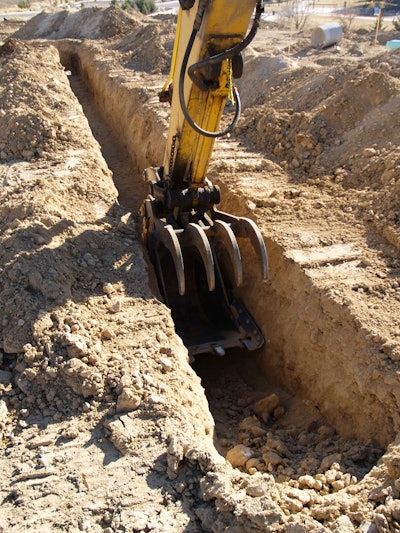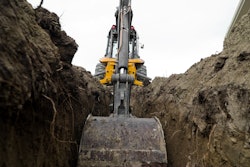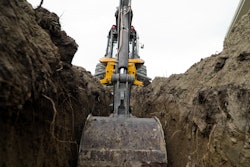
When 1 cubic yard of dirt can weigh as much as 3,000 pounds, or as much as a small pickup truck, and it’s caving in on a worker, it often leads to fatal crushing and suffocation.
There is no time for a worker to react to these sudden collapses. The rescues – which often turn into body recovery missions – are difficult, painstaking and can take hours. Meanwhile, family, friends and coworkers face the heartbreaking frustration of helplessly watching and waiting.
Here’s a guide to preventing that from happening on your jobsites:
Why workers die
The leading reason for OSHA trench violations is failure by the employer to provide adequate cave-in protection.
Other violations include:
- Failure to provide a ladder or other proper means of entering and exiting a trench.
- Placing spoil too close to a trench where rock and dirt could fall in on employees.
- Failure to provide daily inspections of excavations.
- Failure by the designated competent person on the jobsite to protect workers from potential cave-in.
- Hazards created by water accumulating in a trench.
How not to die
Under OSHA regulations, all trenches and excavations 5 feet or deeper must have some form of cave-in protection. OSHA-approved protection systems follow the "Three S's" and consist of one of the following methods:
- Slope or bench trench walls by cutting back the trench wall at an angle inclined away from the excavation.
- Shore trench walls by installing aluminum hydraulic or other types of supports to prevent soil movement.
- Shield trench walls by using trench boxes or other types of supports to prevent soil cave-ins.
Trenches 20 feet or deeper must have protective systems designed by a registered professional engineer.
The National Utility Contractors Association notes that trenches as shallow as 3 to 4 feet deep can also prove fatal, and they should be inspected by a competent person before entering. OSHA requires a jobsite to have a competent person designated to look out for hazards and keep workers safely from them.
Never do this
Along with cave-in protection, OSHA says a trench or excavation should never be entered unless the following conditions are met:
- It has some form of cave-in protection.
- It has been properly inspected by a competent person.
- There is a safe way to enter and exit trenches 4 feet or deeper, such as a ladder with its top at least 3 feet above the trench edge.
- Equipment and materials are at least 2 feet away from the edge.
- It is free of standing water and atmospheric hazards.
Always do this
NUCA also offers the following safety tips:
- Locate all underground utilities before digging.
- Stay inside the area that has been sloped, shored or shielded. Don't work outside it – not even for a moment.
- Eliminate or control water accumulation before entering the trench.
- Stay alert when working in or near previously disturbed soil conditions.
- Keep vehicles away from the edge of the trench.
- Check regularly for hazardous materials and oxygen levels in the trench.
- Make sure running machines are always attended.
- Use a ladder or ramp to get in and out of the trench. Place the ladder inside the protective system.
- Stay off of shoring or shields and don't ride in buckets or on crane hooks.
- Wear hard hats when working in or around trenches.
- Stay out from under raised loads.









